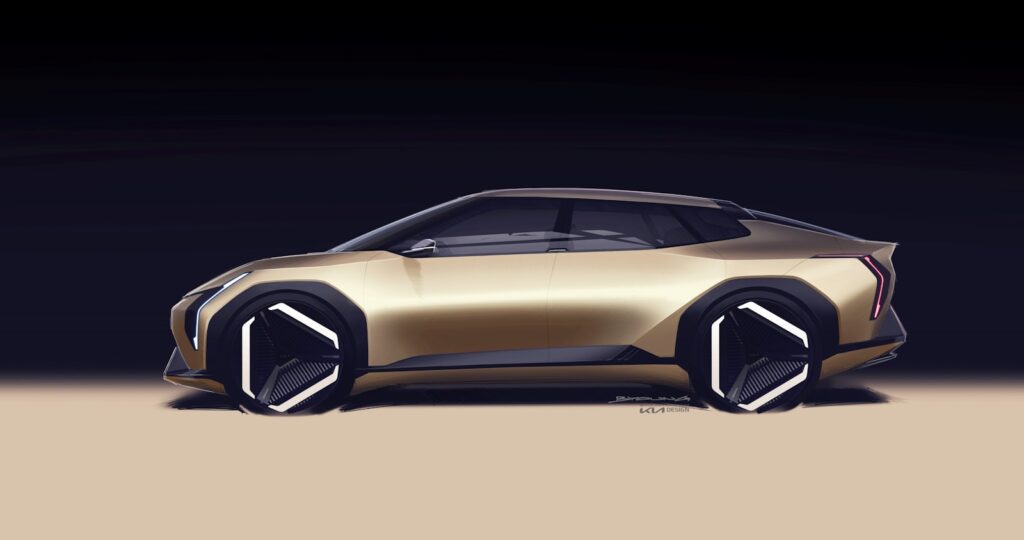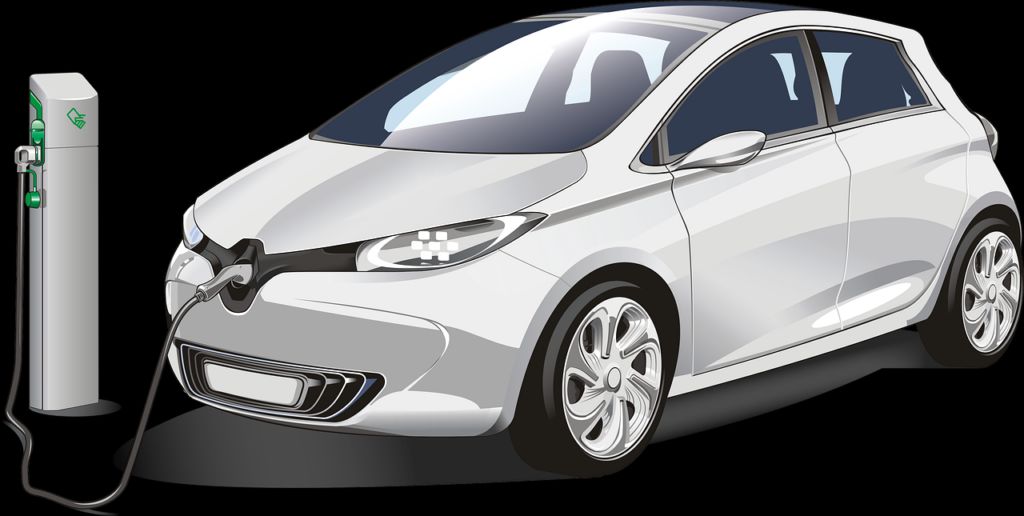
The automotive sector, often perceived through the lens of performance and luxury, is undergoing a quiet but profound revolution. Beneath the sleek exteriors and powerful engines, a significant shift is taking place—one driven by an urgent need for sustainability. For too long, the industry’s environmental impact, from raw material extraction to end-of-life vehicle waste, has been a substantial concern. However, a growing number of forward-thinking manufacturers are now championing an inspiring transformation, embedding the principles of reduce, reuse, and recycle deeply into their production DNA.
This isn’t merely about ticking boxes; it’s about fundamentally rethinking how vehicles are designed, manufactured, and eventually repurposed. The transition towards green materials, encompassing sustainable, recycled, bio-based, and lightweight substances, is not just an environmental imperative but a strategic innovation. It promises to redefine efficiency, enhance performance, and unlock new economic advantages, creating a greener future that extends far beyond the tailpipe.
We believe that such noble efforts won’t escape our radar. This article will talk about the various ways automotive companies are integrating recycled materials in their manufacturing processes, revealing the intricate and often ingenious methods they employ to build the cars of tomorrow, today. From innovative interior fabrics spun from discarded bottles to structural components crafted from repurposed industrial waste, the ingenuity on display is nothing short of remarkable.
1. **Audi’s Upholstery Revolution with Recycled PET Bottles**The German automaker Audi is making significant strides towards its goal of becoming net CO2 neutral by 2050, and their approach to interior textiles stands out as a prime example of sustainable innovation. In a groundbreaking initiative, Audi is utilizing polyester yarn derived directly from recycled PET bottles, making up 89% of the upholstery in its fourth-generation A3 model. This isn’t just a token gesture; these sustainable fabrics comprise an impressive majority of the A3’s interior seating.
This commitment demonstrates a powerful fusion of environmental responsibility and design excellence. By diverting plastic bottles from landfills, Audi not only reduces waste but also conserves valuable resources that would otherwise be consumed in producing virgin polyester. It’s a clear statement that luxury and sustainability are not mutually exclusive but can, in fact, enhance one another, offering consumers a premium experience with a lighter ecological footprint.
The adoption of such a high percentage of recycled material in a core component like upholstery speaks volumes about Audi’s dedication. It signifies a move beyond superficial green initiatives, delving into the practical, scalable applications of recycling within mainstream vehicle production. This approach helps reduce the car’s overall carbon footprint, contributing significantly to the brand’s ambitious long-term sustainability targets and setting a high bar for the industry.
Car Model Information: 2022 Audi A3 40 Premium
Name: Audi A3
Caption: Audi A3 Saloon (4th generation)
Manufacturer: Audi
Production: 1996–present
Class: Small family car
BodyStyle: hatchback
Layout: Front-engine, front-wheel-drive layout
Sp: uk
Categories: 1990s cars, 2000s cars, 2010s cars, 2020s cars, All-wheel-drive vehicles
Summary: The Audi A3 is a small family car (C-segment) manufactured and marketed by the German automaker Audi AG since September 1996.
The first two generations of the Audi A3 were based on the Volkswagen Group A platform, while the third and fourth generations use the Volkswagen Group MQB platform.
Get more information about: Audi A3
Buying a high-performing used car >>>
Brand: Audi Model: A3
Price: $23,490 Mileage: 27,987 mi.

2. **Chrysler’s Ingenious Use of Recycled Polyurethane Foam**Chrysler, particularly with its iconic Jeep lineup, is actively embracing recycled materials to enhance sustainability within its vehicle interiors and components. The Jeep Grand Cherokee, for instance, has shifted away from traditional soy-based foams in its seats, opting instead for recycled polyurethane foam plastic. This innovative choice reduces reliance on new materials and provides a robust, comfortable solution for one of the most frequently used parts of a car.
Beyond the seating, Chrysler’s commitment extends to other crucial interior elements. The dash and controls of the Jeep Grand Cherokee are also manufactured using recycled plastics, demonstrating a holistic approach to sustainable cabin design. This integration ensures that touchpoints frequently engaged by drivers and passengers are made from repurposed materials, contributing to a more circular economy within the vehicle.
Furthermore, the sustainability efforts are visible even in less obvious areas, such as the wheel liners of the Jeep Wrangler, which are also crafted from recycled plastics. These examples highlight Chrysler’s dedication to incorporating sustainable practices across various models and components, from visible interior surfaces to functional underbody parts. It underscores a strategic move towards reducing environmental impact without compromising on the rugged durability and quality expected from the Jeep brand.

3. **Toyota’s Pioneering Plant-Based and Recycled Plastics**Toyota, long recognized as a trendsetter in automotive innovation, has been a frontrunner in incorporating recycled plastics and plant-derived materials into its vehicle components. The company actively recycles plastics to produce a diverse range of car parts, showcasing its commitment to a circular economy. This proactive approach helps reduce waste and lessens the demand for virgin petroleum-based plastics, embodying the core tenets of sustainable manufacturing.
A significant portion of plastics used in Toyota models, specifically 20%, are either obtained from plant materials or reformulated plastic. This dual strategy embraces both bio-based alternatives and recycled content, demonstrating a comprehensive effort to minimize environmental impact. For instance, the seats of the popular Prius model are notably made from plastic obtained from plants, highlighting a direct application of renewable resources in a mass-market vehicle.
The Prius, a symbol of eco-conscious driving, further exemplifies Toyota’s deep commitment to sustainability by incorporating plant-based materials throughout its internal structure. According to the automaker, an impressive 60% of the Prius’ internal parts are also derived from products of plant materials. This extensive integration positions Toyota as a leader in leveraging renewable resources, not just for visible components, but for the fundamental construction of its vehicles, significantly reducing its carbon footprint.

4. **Renault’s All-Recycled Interior for the New Zoe EV**Renault has recently announced a significant leap in its sustainability journey, committing to an entirely recycled interior for its new Zoe electric vehicle. This move signals a profound dedication to environmental stewardship and sets a new benchmark for what’s achievable in mass-produced electric vehicles. The company revealed that recycled yarn would be extensively used to create a variety of interior components, transforming waste into high-quality materials.
This comprehensive approach means that key passenger touchpoints such as door fittings, seat covers, dashboard covers, and even gear lever brackets will be manufactured from these sustainable yarns. By specifying “100% recycled materials” for these critical interior elements, Renault is demonstrating a belief in the aesthetic and functional equivalence of recycled content compared to virgin materials, while simultaneously drastically reducing the environmental impact of its manufacturing processes.
The decision to implement this across a popular electric vehicle like the Zoe underscores the scalability and practicality of using recycled materials in contemporary automotive design. It’s a powerful statement that a fully sustainable interior can be both visually appealing and performant, aligning perfectly with the eco-friendly ethos of electric mobility. This initiative by Renault not only reduces waste but also contributes to a lower carbon footprint associated with vehicle production, pushing the boundaries of what consumers can expect from an environmentally conscious car.
Car Model Information: 2023 Dodge Charger GT
Name: Renault Zoe
Manufacturer: Renault
Production: December 2012
Assembly: Flins-sur-Seine
Designer: Jean Semeriva
Class: Supermini
BodyStyle: hatchback
Layout: Front-engine, front-wheel-drive layout
Platform: Nissan B platform
Motor: Synchronous motor
Abbr: on
Battery: lithium ion battery
Range: 210 km
Charging: Type 2 connector
Wheelbase: 2588 mm
Length: 4084 mm
Width: 1730 mm
Height: 1562 mm
Weight: 1468 kg
Successor: Renault 5 E-Tech
Sp: uk
Caption: 2020 Renault Zoe R110 Z.E. (facelift)
Categories: 2010s cars, All Wikipedia articles written in British English, All articles containing potentially dated statements, Articles containing potentially dated statements from December 2016, Articles containing potentially dated statements from December 2020
Summary: The Renault Zoe (stylized ZOE), known as Renault Zoe E-Tech Electric since 2021, is a five-door supermini electric car produced by the French manufacturer Renault. Renault originally unveiled, under the Zoe name, a number of different concept cars. Initially in 2005 as the Zoe City Car and later as the Zoe Z.E. electric concept was shown in two different versions in 2009 and 2010 under the Renault Z.E. name. A production ready version of the Zoe was shown at the 2012 Geneva Motor Show. The Renault Zoe is based on the platform of the Renault Clio.
Retail customer deliveries began in France in December 2012, followed in 2013 by several European countries. Since 2013, the Zoe has been the all-time top selling all-electric car in the French market, with more than 100,000 units registered through June 2020. The Zoe was the top selling all-electric car in Europe for two years running, 2015 and 2016, and also topped European sales in the broader plug-in electric car segment in 2016 and 2020. As of 2020, the Zoe ranks as Europe’s all-time best selling plug-in electric car. As of December 2020, global sales totaled almost 285,000 units since inception.
The first production Zoe had a 22 kWh lithium-ion battery pack that delivers a range between 210 km (130 mi) and 240 km (150 mi) under the NEDC cycle. In September 2016, Renault announced the introduction of new higher range model with a 41 kWh lithium-ion battery, increasing the range to 400 km (250 mi) under the NEDC cycle. In mid 2018 a new model with increased motor power of 80 kW (110 hp), was announced as the ZE 40 R110. In mid 2019, the ZE 50 R135 was announced, with a 55 kWh battery pack (52 usable) and 100 kW (130 hp) motor, and CCS charging; the final production-ready model was shown at the Frankfurt Motor Show and deliveries started end of 2019.
Renault ceased production of the electric 5-door hatchback on 30 March 2024, after nearly twelve years. It was replaced by the retro-styled Renault 5 E-Tech.
Get more information about: Renault Zoe
Buying a high-performing used car >>>
Brand: Renault Model: Zoe EV
Price: $26,690 Mileage: 19,257 mi.

5. **Ford’s Innovative Use of Recycled Plastics in Upholstery and Bumpers**Ford has been a long-standing advocate for incorporating recycled materials into its vehicle production, showcasing ingenious methods to repurpose various forms of plastic waste. A particularly striking example is found in the upholstery of several of its models, including the Ford Focus, where the seat fabric is remarkably built from the equivalent of 22 plastic bottles. This initiative turns everyday waste into durable, functional components, giving new life to discarded consumer plastics.
Beyond interior fabrics, Ford’s recycling efforts extend to more robust exterior components. In the UK market, the company has established a system to recycle damaged bumpers, transforming them into new ones. This closed-loop approach reduces landfill waste and conserves the significant resources required to manufacture new bumper materials. It’s a pragmatic solution that exemplifies circular economy principles in action within a large-scale automotive operation.
Further illustrating its inventive approach, Ford utilizes old Coke bottles to craft the interior components of its hybrid Ford Fusion Energi. This highlights a versatile application of recycled materials, demonstrating that different types of plastic waste can be effectively integrated into various parts of a vehicle’s interior. Ford’s commitment to such diverse recycling initiatives reinforces its dedication to reducing environmental impact and advancing sustainable manufacturing practices across its global fleet.

6. **Honda’s Reformulated Plastics for Interiors and Recycled Bumpers**Honda is a notable proponent of sustainable manufacturing, effectively integrating reformulated plastics and recycled components into its vehicle production. The Acura model, a premium offering from Honda, features seat fabrics made from these reformulated plastics, demonstrating how eco-friendly materials can meet high standards of quality and aesthetics. This practice reduces the demand for virgin materials and contributes to a lighter environmental footprint for their luxury segment.
In the North American region, Honda plants have established sophisticated recycling processes, particularly for automotive bumpers. They actively recycle plastics from damaged bumpers, which are then repurposed to create new mud and splash guards. This localized recycling loop not only minimizes waste but also reduces transportation-related emissions, creating a more efficient and sustainable supply chain for essential vehicle accessories.
Honda’s commitment to recycling is far-reaching, extending beyond just bumpers. The company emphasizes that the majority of a Honda car’s parts can actually be recycled, underscoring a comprehensive design philosophy geared towards end-of-life sustainability. This dedication is further recognized by the fact that all Honda models are grouped in the ‘green’ category, a testament to their continuous efforts in developing environmentally responsible vehicles and manufacturing processes.

7. **General Motors’ Innovative Recycling of Bottles and Plastic Caps**General Motors (GM) is demonstrating impressive creativity in its recycling efforts, transforming everyday plastic waste into functional automotive components. The US-based car manufacturer effectively reformulates bottles and plastic caps, giving them a second life as essential vehicle parts such as air deflectors. This innovative process diverts a significant volume of consumer waste from landfills, showcasing a practical application of circular economy principles.
At its Fort Wayne plant in Indiana, GM takes these recycling initiatives a step further by specifically reprocessing plastic caps to manufacture radiator shrouds for the GMC Sierras. This targeted approach not only provides a sustainable source for these components but also highlights GM’s commitment to integrating recycled materials into critical engine bay assemblies, where durability and performance are paramount.
Moreover, the engines of the Chevrolet Equinox feature covers that are also made from recycled plastics. These applications collectively illustrate GM’s comprehensive strategy to embed sustainable materials across various vehicle platforms and components. By creatively repurposing common plastic waste, General Motors is actively reducing its environmental footprint and contributing to a more sustainable automotive industry, proving that innovation in manufacturing can go hand-in-hand with ecological responsibility.
The revolution in sustainable automotive manufacturing extends far beyond the initial, impressive forays into plastics and textiles. The next wave of innovation delves deeper into comprehensive recycling, broader industry commitments, and an inspiring expansion into related sectors like two-wheelers and tires, all while confronting the inherent challenges of this transformative journey. As we continue to chart these advancements, it becomes clear that the industry is not just reacting to environmental pressures but actively forging a future where every component tells a story of reuse and responsibility.

8. **Nissan’s Strategic Approach to Circularity**Nissan, another prominent Japanese automaker, has been a quiet but forceful advocate for incorporating recycled materials into its vehicle production. Their strategy goes beyond surface-level changes, deeply integrating repurposed plastics into core functional and aesthetic components, showcasing a commitment to reducing waste and enhancing resource efficiency throughout their models.
One particularly inventive application involves extracting plastic fibers from discarded bottles. These fibers are then meticulously recycled and re-engineered to become the primary component in dashboard sound insulation layers. This not only diverts substantial plastic waste from landfills but also contributes to a quieter, more refined cabin experience, proving that sustainable materials can enhance performance.
Beyond interior acoustics, Nissan actively engages in a closed-loop recycling system for structural components. Bumpers from older, end-of-life Nissan vehicles are systematically collected, processed, and then repurposed to manufacture new bumpers for their latest models. This initiative significantly reduces the demand for virgin plastics and minimizes the energy consumption associated with creating new materials from scratch.
The iconic Nissan Leaf, a beacon of electric mobility, further exemplifies this dedication. Specific parts of the Leaf’s construction are notably made from recycled soda plastic bottles. This strategic integration into a flagship electric vehicle underlines Nissan’s holistic approach to sustainability, marrying its electric vehicle leadership with advanced material recycling practices to build truly green automobiles.

9. **Luxury Brands Embrace Sustainable Alternatives**For years, high-end car manufacturers like Jaguar, Mercedes, and Tesla have differentiated themselves through lavish interiors, often featuring premium leather across dashboards and seating. While this traditionally symbolized luxury and exclusivity, its environmental footprint presented a growing concern, challenging the perception of modern, responsible luxury.
However, a significant paradigm shift is underway within this elite segment. These manufacturers have begun to adopt a more environmentally conscious approach, actively transitioning towards sustainable alternatives such as vegan leather and advanced polyester materials. This pivot reflects a broader industry movement towards ethical sourcing and manufacturing, even in the most opulent vehicle categories.
Crucially, these innovative materials are not merely substitutes; they are engineered to offer the same prestigious aesthetics and tactile quality that discerning luxury car buyers expect. The advancements in material science mean that vegan leather can replicate the feel and durability of traditional leather, while high-grade polyesters offer new possibilities for sophisticated textures and finishes.
This embrace of sustainable alternatives by luxury brands is a powerful statement. It demonstrates that exclusivity and environmental responsibility are not mutually exclusive but can, in fact, be harmoniously integrated, setting a new benchmark for eco-conscious luxury and catering to a generation of consumers who prioritize both style and sustainability.
Read more about: Smart Style, Smarter Savings: 13 Affordable IKEA Finds That Mimic High-End Designer Furniture

10. **Driving Forces Behind the Green Shift: Why Automakers are Changing**The automotive industry’s accelerating pivot towards incorporating recycled materials is not a solitary corporate decision but a response to a much larger societal movement, as illuminated by research firm GlobalData. This macro-level shift underscores a fundamental re-evaluation of industrial impact on the planet, driving systemic changes across manufacturing processes.
Historically, the industry has been one of the most significant contributors to environmental deterioration. This impact spans the entire lifecycle of a vehicle, from the energy-intensive extraction of raw materials and the production processes, through the toxic emissions released during operation, to the substantial waste materials generated at the end of a vehicle’s serviceable life. Recognizing this extensive footprint is the first step towards remediation.
In this context, the adoption of recycling materials and strategies to reduce waste represents a crucial, foundational effort for automakers. While the challenges are immense, these actions are viewed as the bare minimum required to mitigate their environmental legacy and align with global sustainability goals, moving beyond mere compliance to proactive stewardship.
Furthermore, the burgeoning prominence of ride-sharing and car-sharing services has introduced a critical, pragmatic concern: hygiene. With more individuals regularly utilizing shared vehicles, manufacturers are compelled to adopt car interiors that are not only durable and sustainable but also designed to best cater to a multi-user environment, often leading to easier-to-clean and more robust recycled materials.
Read more about: Inside the Global Shipbreaking Yards: Where Multimillion-Dollar Cruise Ships Go for Their Final Voyage

11. **Beyond the Obvious: Comprehensive Car Component Recycling**The journey towards a truly circular automotive economy involves a granular approach to every part of a vehicle. It’s not just about the large, visible components; it encompasses a vast array of materials and parts that, with the right processes, can be given a second life. Vehicle recyclers play an indispensable role in ensuring that this recycling process is meticulously executed, inside and out.
Certain car components are particularly well-suited for recycling due to requiring minimal processing before they can be reused. Among the most frequently recycled car parts are scrap metals, meticulously collected from elements like door handles and wheel rims, and the lead from car batteries. These materials represent valuable resources that can be continuously re-integrated into new production cycles.
Even vehicles deemed write-offs or those involved in severe collisions still harbor a wealth of functional components. Specialized wreckers and dismantlers possess the expertise to systematically pull these cars apart, salvaging a wide array of parts that retain their utility and can be put into service again, preventing valuable resources from ending up in landfills.
This meticulous salvaging process yields a diverse inventory of reusable components. Common examples include essential items like headlights and taillights, interior elements such as seats, crucial exhaust system parts, mirrors, entire engines and their constituent components, transmission systems, and wheels. This comprehensive approach maximizes resource recovery, underpinning a more sustainable automotive ecosystem.

12. **The Intricate Role of Recycled Plastics and Overcoming Hurdles**Recycled plastics have carved out an increasingly significant niche in modern car manufacturing, becoming integral to various components that enhance both vehicle performance and passenger comfort. Today, these versatile materials are widely employed in critical areas such as bumpers, where their impact resistance is essential, and in sound-insulating and protective covers, contributing to a quieter and safer cabin environment.
Their application extends further into the vehicle’s interior, forming the basis for interior lining and carpets, often creating durable and aesthetically pleasing surfaces from repurposed waste. It’s noteworthy that plastics, in their various forms, now account for up to half of the mass of any modern car, underscoring their omnipresence and the potential impact of their sustainable sourcing.
Despite this encouraging progress, carmakers are continuously pushing the boundaries, intensely studying novel ways to make even more recycled plastic viable for use in an expanded range of car parts. This ongoing research aims to unlock new applications, further reducing reliance on virgin materials and deepening the industry’s commitment to circularity.
However, the path to widespread recycled plastic integration is not without significant challenges. A primary hurdle facing automakers is the substantial cost associated with the advanced methodology and specialized equipment required for effective recycling processes. This capital-intensive nature can make the upfront investment daunting for manufacturers.
Compounding this is the economic reality that, in many instances, the recycling process remains cost-ineffective. It is often considerably cheaper to purchase and utilize new, virgin plastics than to undertake the complex and resource-intensive task of recycling existing ones. Yet, this is precisely where genuine commitment to sustainability becomes paramount. Monetary cost, in this context, should never be construed as equivalent to environmental cost, as the long-term ecological benefits far outweigh the immediate financial outlays.
13. **Bio-Based Plastics and Polymers: A Renewable Future**Looking beyond conventional recycling, bio-based plastics and polymers represent a compelling frontier in sustainable automotive materials. These innovative substances offer a promising alternative to traditional petroleum-based materials, leveraging rapidly renewable resources such as corn, sugarcane, and algae. Their emergence signals a profound shift towards truly renewable manufacturing inputs.
Their versatility is already evident across various automotive applications. Manufacturers are increasingly integrating bio-based polymers into vehicle interiors for components like seat cushions and door panels, and even extending their use to exterior elements and engine covers. This broad spectrum of application underscores their potential to transform numerous parts of a vehicle’s construction.
The advantages of bio-based plastics extend far beyond reducing dependence on finite fossil fuels. They offer tangible environmental benefits, including significantly lower carbon emissions throughout their lifecycle compared to conventional plastics. While some variants are engineered to be biodegradable, others, like bio-polyethylene, provide robust, renewable alternatives without necessarily breaking down biologically, offering diverse solutions for different needs.
However, the widespread adoption of bio-based materials is not without its hurdles. Key challenges persist, particularly in ensuring they meet the stringent durability and performance standards essential for demanding automotive applications, where safety and longevity are paramount. Additionally, scaling their production to match the immense needs of the automotive industry while simultaneously maintaining cost competitiveness remains a formidable obstacle. Despite these challenges, continuous research and development efforts are strategically positioning bio-based plastics as an indispensable cornerstone of the future of sustainable automotive design, promising a greener and more resilient material landscape.

14. **Expanding Horizons: Motorcycles, Riding Gear, and the Two-Wheeler Revolution**The drive for sustainability within the automotive sector is dynamically expanding, reaching beyond traditional four-wheeled vehicles to encompass the vibrant world of motorcycles, specialized riding gear, and even tires. This holistic approach signals a comprehensive industry commitment, proving that the principles of reducing, reusing, and recycling are universally applicable across mobility platforms.
Two-wheeler manufacturers are enthusiastically embracing this sustainability mandate. Yamaha, a global leader, utilizes recycled polypropylene in its commuter motorcycles and scooters specifically designed for ASEAN markets. This targeted application highlights how sustainable materials can be integrated into high-volume segments, making eco-conscious choices accessible to a broader audience.
Further demonstrating this commitment, Ducati, renowned for its performance motorcycles, boldly claims that an impressive 90% of its bikes incorporate a blend of recycled plastic, rubber, metals, and even electrical components. This extensive integration across diverse material categories sets a powerful precedent for sustainability within the high-performance motorcycle segment.
Closer to home, the innovation extends to rider safety and apparel. Royal Enfield has distinguished itself as the first domestic two-wheeler manufacturer to produce sustainable riding gear. Their innovative Streetwind Eco Riding jacket, for instance, is manufactured using the equivalent of 75 recycled PET bottles, all while meticulously maintaining rigorous safety standards with proper armor, offering an eco-friendly yet protective option for riders.
15. **The Road Ahead: Sustainable Tires, Ambitious Targets, and Future Outlook**As the industry presses forward, even fundamental components like tires are undergoing a significant sustainable transformation. Continental, a global leader in tire manufacturing, has been at the forefront of this innovation since 2022. Their patented ContiRe.Tex technology exemplifies this commitment, utilizing polyester yarns meticulously extracted from recycled PET bottles.
This groundbreaking technology is not confined to niche products; it is integrated into the company’s high-performance PremiumContact 6 and EcoContact 6 summer tires, as well as their AllSeasonContact range. This widespread application demonstrates the scalability and performance viability of recycled materials even in critical, safety-dependent components like tires, directly linking consumer waste to essential vehicle functionality.
Beyond specific component innovations, major automotive players are setting ambitious, overarching targets for material circularity. Volvo, for instance, has firmly committed that an impressive 25 percent of all its vehicles will contain recycled plastic materials from 2025 onwards. This forward-looking pledge underscores a systemic shift, moving beyond individual projects to embed recycled content as a standard across their entire fleet.
Similarly, Citroën’s Oli concept car pushes the boundaries further by employing recyclable materials for both external body panels and interior components. This visionary design, according to the French marque, prioritizes easy repair and replacement, embodying a cradle-to-cradle philosophy that promises longevity and minimal environmental impact. These developments, alongside the increasing integration of advanced materials like graphene and bioplastics and the optimization offered by 3D printing technology, collectively paint a picture of a future where sustainability is not an afterthought but an intrinsic part of automotive engineering.
The future of green materials in vehicle production looks not just promising, but inevitable. As technology advances with unprecedented speed and global environmental awareness continues to intensify, the automotive industry will undeniably prioritize sustainability at every stage. We can anticipate increased, collaborative efforts between manufacturers, suppliers, and even waste management industries, driving the widespread adoption of green materials. Coupled with the relentless development of robust circular economy practices, this heralds a future filled with tremendous potential for advancements and innovations, ultimately leading to the creation of more sustainable, efficient, and truly responsible vehicles for generations to come.







